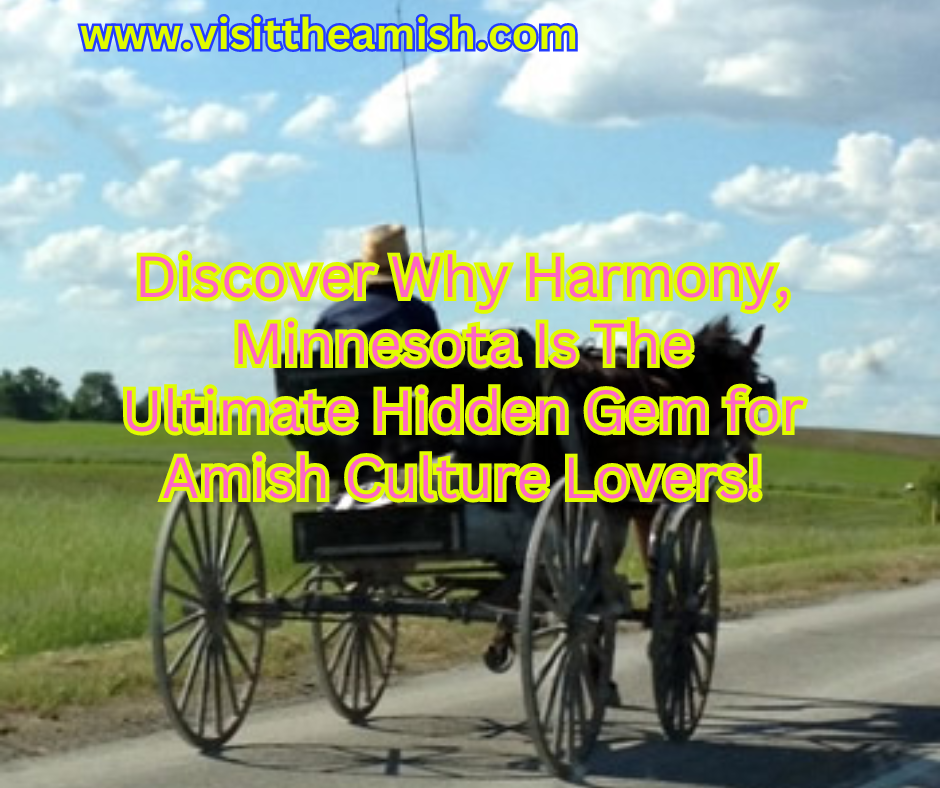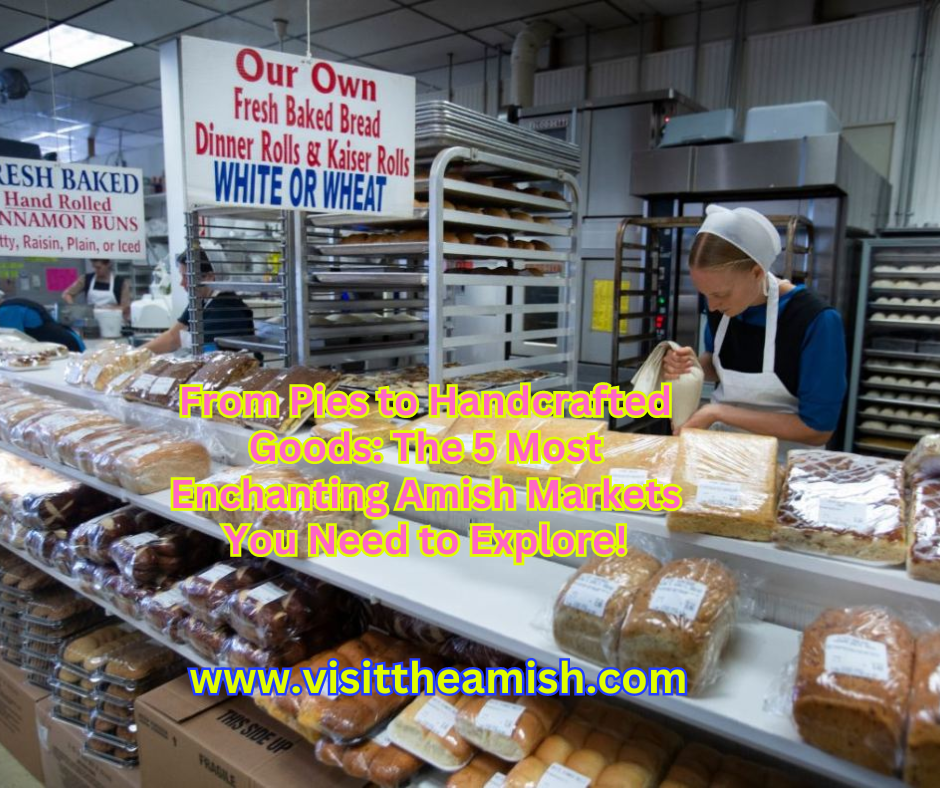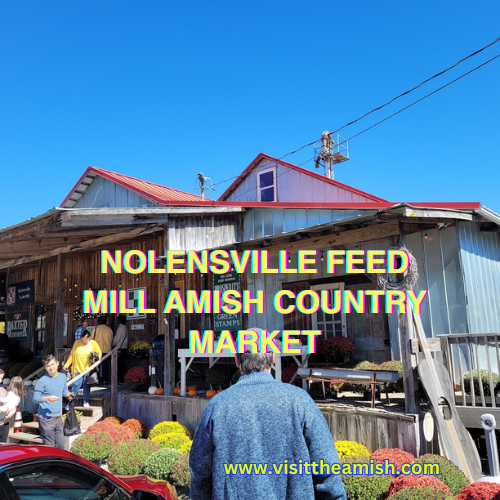As you drive into Harmony, Minnesota, you’ll immediately notice the unique blend of modern and traditional lifestyles coexisting in this charming town. Home to the largest Amish community in Minnesota, Harmony offers you a rare glimpse into the simple yet rich culture of the Old Order Amish[2][5].
As you explore the area, you’ll see horse-drawn buggies sharing the road with cars, a sight that perfectly encapsulates the town’s unique character. The Amish community here, which began settling in 1974, has grown to over 1,000 people, with ten church districts and ten one-room schools[5].
Exploring Amish Country
To truly immerse yourself in the Amish way of life, you should consider taking a guided tour. Amish Tours of Harmony, operating for over 30 years, offers an excellent opportunity to learn about Amish culture, history, and customs[3][4]. As you travel through the pastoral countryside in the comfort of an air-conditioned mini-bus, your knowledgeable guide will answer all your questions about this fascinating community.
Shopping for Amish Goods
Your visit to Harmony wouldn’t be complete without exploring the various shops and markets offering authentic Amish-made products. Here are some must-visit spots:
- Amish Country Co-Op Farmer’s Market: Located just outside town, this market is a treasure trove of fresh produce, homemade goods, and handcrafted items[1].
- Burdey’s Cafe: While not an Amish establishment, this local favorite often features Amish-made baked goods and jams[5].
- Village Green: This cluster of unique gift shops includes the Village School Quilt Shop, which boasts the largest selection of Amish quilts in Minnesota[5].
- Amish Furniture Shop: Just 1.5 miles from Harmony, you’ll find an Amish-owned shop offering handcrafted furniture, cutting boards, wooden toys, and more[5].
- Harmony Antique Mall: With 80 vendors in 130 booths, this 10,000 sq. ft. mall hosts seasonal Saturday Amish farmer’s markets[5].
As you browse these shops, you’ll find an array of Amish-made items including baskets, furniture, jams, rugs, quilts, baked goods, and the famous cashew crunch[5].

Nestled in the picturesque countryside of southeastern Minnesota, the Harmony area is home to the state’s largest Amish community. Known as the “Harmony-Canton Amish,” this Old Order Amish settlement has grown significantly since its establishment in 1974, now boasting over 1,000 members across ten church districts and ten one-room schools.
The Harmony-Canton Amish are part of the Old Order, which means they maintain a traditional lifestyle, eschewing most modern technologies in their homes and businesses. This commitment to simplicity and tradition is evident in their daily lives and the products they create.
As you explore the area, you’ll find numerous opportunities to experience Amish culture and purchase their handcrafted goods. From baskets and furniture to jams, rugs, quilts, baked goods, and the famous cashew crunch, the Amish offer a wide array of high-quality, handmade items. These can be found in local businesses, farmers markets, Amish homes, and roadside stands throughout the region.
For those looking to delve deeper into the Amish way of life, Amish Tours of Harmony offers guided experiences. Located at 94 2nd Street NW in Harmony, this tour company has been providing insightful and respectful tours for over 20 years. You can contact them at 507-886-2303 or visit their website at www.amish-tours.com to learn more about their offerings. (Note: Tours are not available on Sundays.)
As you venture into the countryside, you’ll discover various Amish-owned businesses. Five Star Weaving, situated at 33343 Garden Rd., Harmony, specializes in woven shag rugs, potholders, and clothespin baskets. To find this hidden gem, head south on HWY 139 from Harmony and turn left on Garden Road at the fire station.
For those interested in furniture and woodcrafts, Triple M Furniture at 13222 US 52, Harmony, offers an impressive selection of dining room sets, living room furniture, cutting boards, wind chimes, wooden toys, and more.
In town, the Village Green (90-94 2nd St. NW, Harmony) houses a cluster of unique gift shops. The Village School Quilt Shop, part of this complex, boasts the largest selection of Amish quilts in Minnesota. Nearby, the Village Depot (90 2nd St NW, Harmony; 507-886-2409) occupies Harmony’s historic 1890s train depot, offering a blend of Amish-made products and modern gifts.
Antique enthusiasts will appreciate the New Generations of Harmony Antique Mall (50 Industrial Blvd NE, Harmony; 507-886-6660). This 10,000 sq. ft. mall features 80 vendors across 130 booths and hosts seasonal Saturday Amish farmer’s markets.
The Harmony area offers a unique opportunity to step back in time and experience the rich culture and craftsmanship of Minnesota’s largest Amish settlement. Whether you’re interested in handcrafted goods, traditional farming methods, or simply a glimpse into a simpler way of life, the Harmony-Canton Amish community provides a fascinating and enriching experience for visitors.
Dining Experiences
While there aren’t specific Amish-run restaurants in Harmony, you can still enjoy flavors inspired by Amish cuisine:
- Village Depot: This unique gift shop, located in Harmony’s historic 1890s train depot, offers gourmet foods including Amish jams and jellies[5].
- BReaKeRs: Situated in a charming pink house, this eatery serves sandwiches, salads, wraps, and rice bowls, along with ice cream treats and specialty coffee[5].
When visiting Bertha, Minnesota, the Amish community offers a unique glimpse into a simpler way of life. Here are the top five must-see attractions that will enhance your experience and immerse you in the rich culture of the Amish in this area.

1. Amish Country Co-OP Farmer’s Market
One of the highlights of your visit should be the Amish Country Co-OP Farmer’s Market. This market serves as a central hub for the Amish community, showcasing a wide variety of locally produced goods. Here, you can find fresh produce, homemade baked goods, jams, jellies, and handcrafted items like quilts and furniture. The inviting atmosphere and the chance to interact with local Amish vendors make this a must-visit spot. The market is open six days a week, providing ample opportunity to explore its offerings and sample delicious treats like fresh donuts made on-site[1][5].
2. The Round Barn
A short drive from Bertha will lead you to one of the few remaining round barns in Minnesota. This historical structure is a testament to the area’s agricultural heritage and is being preserved in its original condition. As you admire the barn’s unique architecture, take a moment to appreciate its significance in the local farming community. The round barn is not only a beautiful sight but also a reminder of the Amish commitment to their farming roots[3].
3. Local Amish Farms
While exploring the countryside, consider visiting some of the local Amish farms. Many of these farms offer tours or allow visitors to purchase fresh produce directly from the source. You might find everything from seasonal vegetables to homemade cheeses and baked goods. Engaging with the farmers gives you a deeper understanding of their lifestyle and the hard work that goes into maintaining their farms. Keep an eye out for signs indicating farm stands along the roads.
4. Buggy Rides

For a truly authentic Amish experience, look for opportunities to take a buggy ride through the scenic countryside. Several local businesses offer guided tours that allow you to explore the beautiful landscapes while learning about Amish traditions and customs from knowledgeable guides. This leisurely ride is a perfect way to appreciate the peaceful surroundings and the simplicity of Amish life.
5. Community Events and Festivals
If your visit coincides with local events, be sure to participate in community gatherings and festivals. Bertha hosts various events throughout the year, including the annual Bertha Days, which features food, crafts, and entertainment. These events often showcase Amish culture, providing you with a chance to connect with the community and enjoy traditional food and crafts. Check local listings for upcoming events during your visit.
By exploring these attractions, you will gain a deeper appreciation for the Amish way of life in Bertha, Minnesota. Each destination offers a unique insight into their culture, traditions, and the beauty of their craftsmanship. Whether you’re shopping at the Co-Op, enjoying a buggy ride, or participating in community events, your experience will be enriched by the warmth and hospitality of the Amish community.
Respecting the Amish Way of Life
As you explore, remember that the Harmony Amish belong to the Old Order, meaning they’re very private and adhere strictly to their traditional way of life[2][5]. Be respectful of their customs and refrain from taking photographs of Amish individuals.
Your visit to Harmony offers a unique opportunity to step back in time and experience a simpler way of life. From the clip-clop of horse hooves on pavement to the handcrafted goods in local shops, every aspect of your journey through Amish country in Harmony will leave you with a deeper appreciation for this remarkable community and their enduring traditions.
Citations:
[1] https://www.onlyinyourstate.com/minnesota/amish-town-harmony-mn/
[2] https://www.mnopedia.org/group/harmony-amish
[3] https://www.experiencerochestermn.com/listing/amish-tours-of-harmony/345/
[4] https://www.amish-tours.com
[5] https://www.exploreharmony.com/play/amish-communities/














































